7 Must Visit Temples In Uttarakhand
By: Priyanka Maheshwari Sat, 03 June 2023 3:56:33
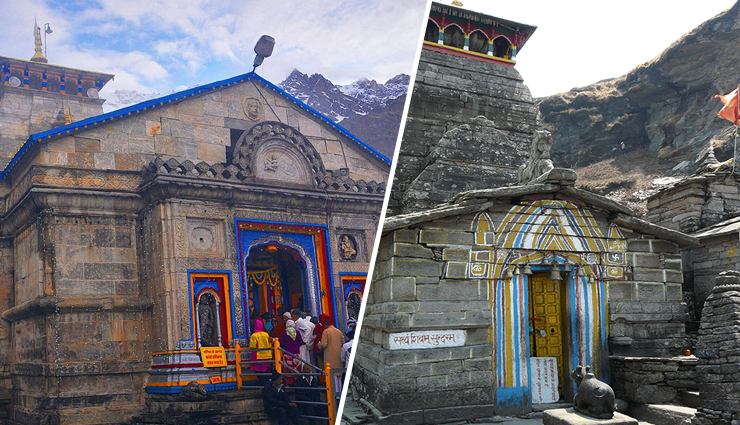
Uttarakhand, also known as the "Land of the Gods," is a state located in the northern part of India. It was carved out from the larger state of Uttar Pradesh in the year 2000 and is nestled in the lap of the Himalayas. With its breathtaking landscapes, majestic mountains, and sacred rivers, Uttarakhand is renowned for its natural beauty and spirituality.
The state is home to numerous pilgrimage sites, including the famous Char Dham (Gangotri, Yamunotri, Kedarnath, and Badrinath), which attract millions of devotees and tourists each year. Uttarakhand also boasts several national parks and wildlife sanctuaries, such as Jim Corbett National Park and Valley of Flowers National Park, making it a paradise for nature lovers and wildlife enthusiasts.
The capital city of Uttarakhand is Dehradun, while other major cities include Haridwar, Rishikesh, and Nainital. These cities are not only gateways to the Himalayas but also centers of cultural and spiritual significance. The region is known for its vibrant festivals, traditional music, dance, and handicrafts, which showcase the rich cultural heritage of the state.
Uttarakhand offers a wide range of outdoor activities, including trekking, mountaineering, river rafting, and skiing, attracting adventure seekers from around the world. The state is also renowned for its Ayurvedic treatments and yoga retreats, making it a popular destination for wellness and spiritual tourism.
Overall, Uttarakhand is a land of serene beauty, spirituality, and adventure, offering a unique blend of natural wonders and cultural treasures that leave a lasting impression on its visitors.
Uttarakhand is home to several famous temples that hold great religious and cultural significance. Here are some of the well-known temples in Uttarakhand:

# Kedarnath Temple
Kedarnath Temple is one of the most revered and significant Hindu temples in India. Visiting Kedarnath Temple provides not only a religious experience but also an opportunity to witness the beauty of the Himalayas and immerse oneself in the serenity of the surroundings. Here's an overview of Kedarnath Temple:
Location: Kedarnath Temple is located in the Rudraprayag district of Uttarakhand, India. It is situated at an altitude of 3,583 meters (11,755 feet) in the Garhwal Himalayan range, near the Mandakini River.
Spiritual Significance: Kedarnath Temple is dedicated to Lord Shiva, one of the major deities in Hinduism. It is considered one of the twelve Jyotirlingas, which are believed to be the most sacred abodes of Lord Shiva. The temple holds immense religious importance and attracts devotees from all over the world.
Mythological Legend: According to Hindu mythology, Kedarnath Temple is believed to be the place where Lord Shiva granted Pandavas (from the Mahabharata) their wish for salvation from their sins. The temple is also associated with the epic tale of the Kurukshetra war and the journey of Pandavas to attain moksha (liberation).
Architecture: The temple follows traditional North Indian temple architecture. It is built using large stone slabs and stands amidst the breathtaking Himalayan peaks. The temple complex includes the main shrine, a Nandi (bull) statue, and various other smaller temples and shrines.
Access and Pilgrimage: An act of pilgrimage is making the trip to Kedarnath Temple. From Gaurikund, the base camp, it requires a journey of around 16 km (10 miles). With vistas of valleys, waterfalls, and snow-capped mountains, the trekking path is scenically stunning. For a speedier and simpler approach, devotees can also use the available helicopter services.
Opening and Closing: Depending on the Hindu calendar, Kedarnath Temple is open for a brief time from April/May to October/November. Due to the region's frequent snowfall, it is always closed in the winter.
Festivals and Celebrations: Several festivals and rituals are celebrated at Kedarnath Temple, attracting a large number of devotees. The most important festival is the Maha Shivaratri, dedicated to Lord Shiva, which witnesses grand celebrations and attracts devotees in large numbers.
Natural Beauty: The amazing natural splendour that surrounds Kedarnath Temple is in addition to its religious importance. The spectacular snow-capped peaks, clear rivers, and lush vegetation all contribute to the temple's quiet and peaceful atmosphere.
Char Dham Yatra: One of the important pilgrimage sites on the Char Dham Yatra, which also includes visits to the Yamunotri, Gangotri, and Badrinath temples, is Kedarnath. To seek blessings and find spiritual fulfilment, pilgrims go on this holy trip.

# Badrinath Temple
Badrinath Temple is one of the most respected Hindu temples in the country. Along with the breathtaking Himalayan scenery, visiting Badrinath Temple gives a profound spiritual experience. Devotees come here to get comfort and heavenly benefits because of the place's profound devotion and tranquilly. In addition to being a pilgrimage, the trip to Badrinath offers the chance to commune with nature and discover inner tranquilly.Here is a summary of the Badrinath Temple:
Location: Badrinath Temple is situated in the Chamoli district of Uttarakhand, nestled in the Garhwal Himalayas. It is located at an elevation of 3,415 meters (11,204 feet) above sea level, near the Alaknanda River.
Spiritual Significance: Badrinath Temple is dedicated to Lord Vishnu, one of the principal deities in Hinduism. It is considered one of the Char Dham pilgrimage sites, along with Yamunotri, Gangotri, and Kedarnath. The temple holds immense religious importance, and it is believed that visiting Badrinath provides spiritual purification and liberation from the cycle of birth and death.
Mythological Legend: According to Hindu mythology, Badrinath Temple is said to be the spot where Lord Vishnu meditated in the form of Lord Badri to attain enlightenment. The temple is also associated with the Pandavas from the Mahabharata, who are believed to have visited this sacred place on their journey to heaven.
Architecture: The architecture of Badrinath Temple showcases traditional North Indian temple style. It is made of stone and has a distinctive conical shape with a golden-colored cupola on top. The temple's interior is adorned with intricate carvings and sculptures depicting various Hindu deities.
Opening and Closing: From April/May through November each year, the Badrinath Temple is open for a brief time. Due to the extensive snowfall in the area, it is closed during the winter. Based on the Hindu calendar, the temple's opening and closing times are chosen so that they fall on significant Hindu festivals and lucky days.
Rituals and Offerings: The temple priests offer Lord Vishnu adoration on a regular basis through rites and ceremonies. Devotees perform a variety of puja rituals and prayers in order to get blessings and divine direction. The sacred Badri Patra (leaf), which are said to bring luck and wealth, are the principal offering made at the Badrinath Temple.
Festivals and Celebrations: Badrinath Temple witnesses grand celebrations during important Hindu festivals. The most significant festival is the Badri Kedar Festival, which marks the closing of the temple for the winter season. Other festivals celebrated with great enthusiasm include Maha Shivaratri, Krishna Janmashtami, and Diwali.
Natural Beauty: Incredible natural splendour surrounds the Badrinath Temple's site. The background of the temple is stunning, with the snow-capped Himalayan peaks, clear rivers, and lush vegetation. Mana settlement, which is close by and is thought to be the final settlement before the border with Tibet, adds to the area's appeal.
Pilgrimage and Accessibility: Badrinath Temple is a popular pilgrimage destination, attracting devotees from all over the world. It can be reached by road through a well-connected network of highways. The nearest airport is the Jolly Grant Airport in Dehradun, and the closest railway station is Rishikesh. From there, one can hire taxis or take shared vehicles to reach Badrinath.
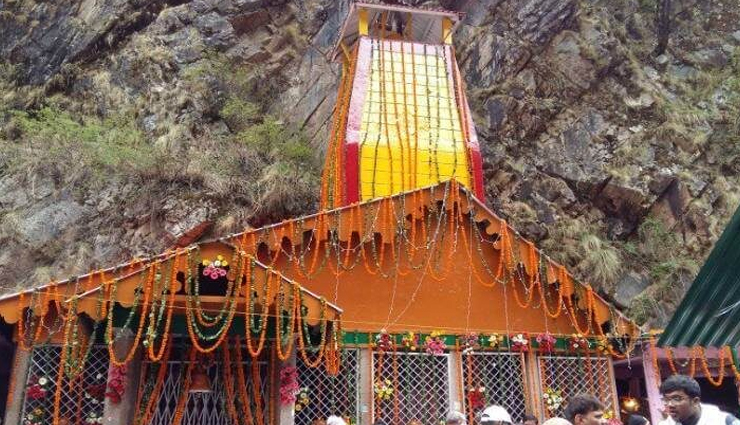
# Yamunotri Temple
Yamunotri Temple is a sacred Hindu temple located in the Uttarkashi district of Uttarakhand. Visiting Yamunotri Temple provides a unique blend of spirituality and natural splendor. It is a place of devotion and tranquility, where devotees seek the blessings of Goddess Yamuna and find solace in the lap of nature. The journey to Yamunotri is a cherished experience that leaves a lasting impact on the hearts and minds of pilgrims. Here's an overview of Yamunotri Temple:
Location: Yamunotri Temple is situated in the western region of Garhwal Himalayas, near the Yamunotri Glacier. It stands at an altitude of 3,293 meters (10,804 feet) above sea level, on the banks of the Yamuna River.
Spiritual Significance: Yamunotri Temple is dedicated to Goddess Yamuna, the personification of the sacred Yamuna River. It is one of the Char Dham pilgrimage sites, along with Badrinath, Kedarnath, and Gangotri. The temple holds immense religious importance, and it is believed that a visit to Yamunotri washes away sins and brings blessings.
Mythological Legend: According to Hindu mythology, Yamunotri is the source of the Yamuna River, which is considered the sister of Lord Yama, the god of death. It is believed that taking a dip in the holy waters of the Yamuna River and offering prayers at the temple can provide salvation and liberation from the cycle of life and death.
Architecture: Yamunotri Temple follows traditional North Indian temple architecture. It is made of stone and has a distinctive red-colored facade. The temple's interior houses the idol of the goddess, along with other deities and sacred symbols.
Opening and Closing: Yamunotri Temple remains open for a limited period each year, from April/May to November. It is closed during the winter months due to heavy snowfall and extreme weather conditions in the region. The opening and closing dates of the temple are determined based on the Hindu calendar and coincide with auspicious dates and festivals.
Accessibility: The journey to Yamunotri Temple involves a trek of approximately 6 kilometers (3.7 miles) from Janki Chatti, which serves as the base camp. The trekking route offers picturesque views of the mountains, rivers, and waterfalls. Ponies and palanquins are also available for those who prefer a more comfortable mode of transportation.
Rituals and Offerings: The temple priests perform daily rituals and ceremonies to worship Goddess Yamuna. Devotees offer prayers, perform aarti (ritual of worship with lamps), and make offerings of flowers, fruits, and sweets. The holy water of the Yamuna River is considered sacred, and pilgrims often carry it back as a blessing.
Natural Beauty: The surroundings of Yamunotri Temple are blessed with natural beauty. The snow-capped peaks, dense forests, and the gushing Yamuna River create a serene and tranquil atmosphere. The trekking route to the temple offers breathtaking views of the Himalayan landscape.
Yamunotri Trek: The Yamunotri trek is not only a spiritual journey but also an adventure for nature enthusiasts. It allows visitors to experience the pristine beauty of the region while immersing themselves in devotion.
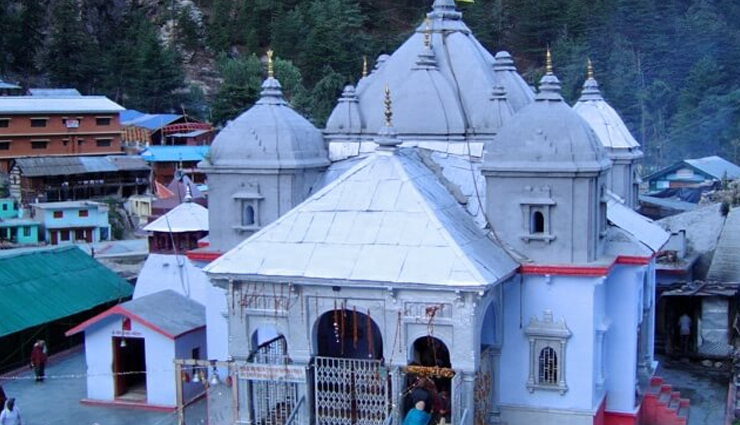
# Gangotri Temple
Gangotri Temple is a revered Hindu shrine located in the Uttarkashi district of Uttarakhand. Visiting Gangotri Temple provides a profound spiritual experience and an opportunity to witness the majestic beauty of the Himalayas. It is a place of devotion and tranquility, where devotees seek blessings from Goddess Ganga and immerse themselves in the serenity of nature. The journey to Gangotri is a cherished pilgrimage, offering a unique blend of spirituality and natural grandeur. Here's an overview of Gangotri Temple:
Location: The Gangotri Temple is located 3,100 metres (10,200 ft) above sea level in the Garhwal Himalayas. It is situated alongside the Bhagirathi River, which is thought to be where the holy Ganges River originates.
Spiritual Significance: Goddess Ganga, the incarnation of the Ganges River, is the object of worship at Gangotri Temple. Along with Yamunotri, Badrinath, and Kedarnath, it is one of the Char Dham pilgrimage locations. The temple is of great religious significance, and it is thought that going there will atone for one's sins and bring blessings and salvation.
Mythological Legend: According to Hindu mythology, Gangotri is the place where Goddess Ganga descended from heaven to Earth. It is believed that Lord Shiva captured the mighty Ganges in his locks to prevent its force from flooding the Earth, and later released it as the sacred River Ganges from his matted hair at Gangotri. The temple is considered the earthly abode of the goddess.
Architecture: Gangotri Temple exhibits traditional North Indian temple architecture. It is made of white granite and stands tall against the stunning backdrop of the Himalayas. The temple has a square-shaped sanctum sanctorum where the idol of Goddess Ganga is worshipped.
Opening and Closing: Gangotri Temple opens its doors to devotees from April/May to November. The temple remains closed during the winter months due to heavy snowfall and extreme weather conditions. The opening and closing dates of the temple are determined based on the Hindu calendar and coincide with auspicious dates and festivals.
Accessibility: Gangotri Temple is accessible via a motorable road from Uttarkashi, which is well-connected to other major cities in Uttarakhand. The temple is located around 100 kilometers (62 miles) from Uttarkashi, and devotees can hire taxis or take buses to reach Gangotri. The surrounding region offers breathtaking views of snow-capped peaks, glaciers, and serene landscapes.
Rituals and Offerings: The temple priests perform daily rituals and ceremonies to worship Goddess Ganga. Devotees offer prayers, perform aarti (ritual of worship with lamps), and make offerings of flowers, fruits, and holy water from the Ganges. It is believed that taking a holy dip in the freezing waters of the Bhagirathi River near the temple can cleanse one's sins.
Natural Beauty: Gangotri is known for its natural beauty and picturesque surroundings. The temple is located in a serene and tranquil setting, surrounded by snow-clad mountains, lush greenery, and the gushing Bhagirathi River. The region offers ample opportunities for trekking, nature walks, and enjoying the pristine beauty of the Himalayas.
Gangotri Glacier: The Gangotri Glacier, which is considered the origin of the Ganges River, is a prominent attraction near the temple. It is one of the largest glaciers in the Himalayas and attracts trekkers and adventure enthusiasts.
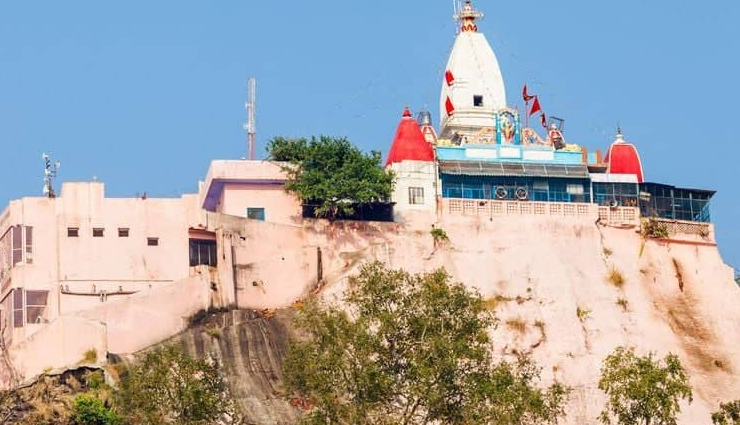
# Mansa Devi Temple
In Uttarakhand's holy city of Haridwar, there is a revered Hindu sanctuary known as Mansa Devi Temple. It is considered lucky and spiritually satisfying to visit the Mansa Devi Temple. Devotees go great distances to visit the holy shrine and enjoy the peace and majesty of Goddess Mansa Devi. For believers and those in search of spirituality in Uttarakhand, the temple is a must-visit location due to its serene atmosphere and breathtaking vistas. Here is a description about Mansa Devi Temple:
Location: Mansa Devi Temple is situated on the Shivalik Hills of the Himalayas, on the southernmost hill of the Haridwar town. It is perched at an elevation of around 1,050 meters (3,445 feet) above sea level.
Deity: The temple is dedicated to Goddess Mansa Devi, who is believed to fulfill the wishes of her devotees. Mansa Devi is considered a form of Shakti, the divine feminine energy, and is venerated as a benevolent goddess who grants blessings and protection.
Mythological Significance: Mansa Devi Temple holds a significant place in Hindu mythology. It is believed that the goddess emerged from the mind of Sage Kashyap, and she played a pivotal role in the slaying of the demon brothers Shumbha and Nishumbha. The temple is considered one of the Siddh Peethas, where it is believed that body parts of the goddess Sati fell during Lord Shiva's cosmic dance, the Tandava.
Accessibility: Mansa Devi Temple can be reached by a ropeway or by trekking uphill. The ropeway, known as Mansa Devi Udankhatola, offers a convenient and scenic mode of transportation for devotees. The trekking route from Haridwar to the temple is also popular among pilgrims, who climb the stairs to reach the shrine.
Architecture: The architecture of Mansa Devi Temple follows the traditional North Indian style. The main shrine houses the idol of Mansa Devi, adorned with colorful clothes and ornaments. The temple complex comprises various other shrines dedicated to different deities, and the surrounding area is beautifully landscaped.
Festivals and Celebrations: The temple witnesses a significant influx of devotees during festivals, especially during the Navratri festival, which is dedicated to the worship of the divine feminine. Special ceremonies, aarti (ritual of worship with lamps), and cultural events are organized during this time. The temple atmosphere is filled with devotion and festive fervor.
Panoramic View: Mansa Devi Temple offers a panoramic view of the sacred city of Haridwar and the surrounding Himalayan ranges. Visitors can soak in the beauty of the Ganges River, the cityscape, and the lush greenery from the temple premises.
Prayer and Offerings: Devotees visit Mansa Devi Temple to seek blessings and offer prayers. They tie sacred threads or "moli" on the holy tree in the temple complex, symbolizing their wishes and desires. Prasad (holy food offering) is distributed among the devotees, and it is believed to carry the blessings of the goddess.
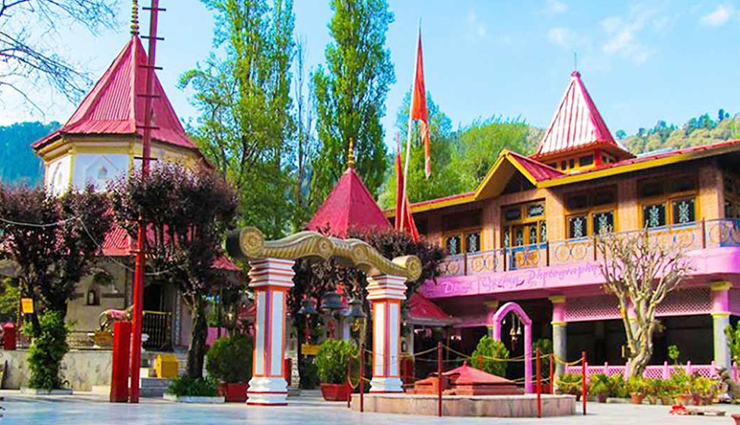
# Naina Devi Temple
Naina Devi Temple is a revered Hindu shrine located in the town of Nainital in Uttarakhand, India. Here's an overview of Naina Devi Temple:
Location: Naina Devi Temple is situated on the northern shore of Naini Lake in Nainital. The temple is nestled amidst the lush green hills of the Kumaon region and offers panoramic views of the surrounding landscapes.
Deity: The temple is dedicated to Goddess Naina Devi, who is believed to be an incarnation of Goddess Durga. Naina Devi is highly revered by devotees and is considered the presiding deity of Nainital.
Mythological Significance: Naina Devi Temple holds a significant place in Hindu mythology. It is believed that the temple marks the spot where the eyes of Goddess Sati (consort of Lord Shiva) fell when her body was dismembered by Lord Vishnu's Sudarshan Chakra. Hence, the temple is considered a Shakti Peetha, one of the sacred sites where body parts of Goddess Sati are believed to have fallen.
Architecture: Naina Devi Temple showcases traditional Kumaoni architecture. The temple structure is adorned with intricate woodwork and carvings. The main shrine houses the idol of Goddess Naina Devi, embellished with colorful clothes and jewelry.
Accessibility: Naina Devi Temple is easily accessible from Nainital town. Visitors can reach the temple either by walking or by using a ropeway. The ropeway offers a convenient and scenic mode of transportation, providing mesmerizing views of the town and the surrounding mountains.
Festivals and Celebrations: The temple attracts a large number of devotees during festivals, particularly during Navratri, which is dedicated to the worship of the divine feminine. Special prayers, bhajans (devotional songs), and cultural events are organized during this time. The temple ambiance is filled with spirituality and festivity.
Naini Lake: Naina Devi Temple's location near the picturesque Naini Lake adds to its charm. Visitors can enjoy boating in the serene lake waters and take in the scenic beauty of the surroundings. The temple's tranquil setting, combined with the peaceful ambiance of the lake, offers a serene and spiritual experience.
Spiritual Significance: Devotees visit Naina Devi Temple to seek the blessings of the goddess and offer their prayers. The temple is believed to fulfill the wishes of devotees and bring prosperity and well-being. It is also considered auspicious for newlywed couples to seek the blessings of Goddess Naina Devi for a harmonious and blissful married life.
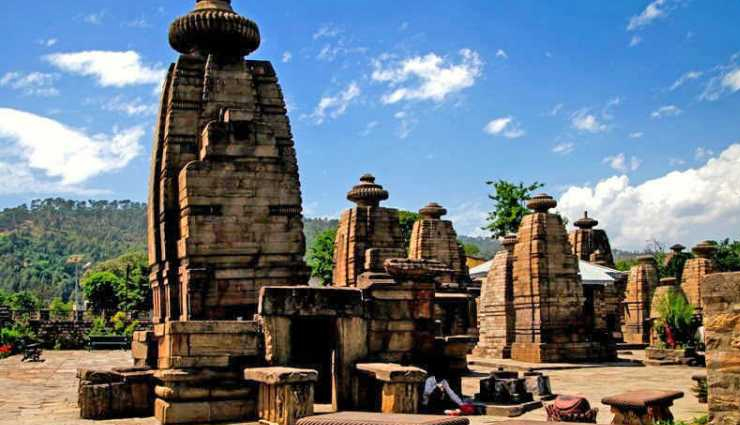
# Baijnath Temple
In the Uttarakhand town of Baijnath, which is part of the Bageshwar district, lies the famed old temple known as the Baijnath Temple. One special opportunity to see Uttarakhand's rich cultural history and architectural wonders is to visit Baijnath Temple. The purpose of visiting this shrine is to get Lord Shiva's blessings and to feel peaceful and spiritual. For those interested in discovering the spiritual and cultural riches of Uttarakhand, the temple is a must-visit location because of its historical significance and natural beauty. Here is a overview about Baijnath Temple:
Location: Baijnath Temple is situated on the banks of the Gomti River, amidst the scenic beauty of the Kumaon region in Uttarakhand. It is nestled in the foothills of the Himalayas, surrounded by lush greenery and panoramic views.
Historical Significance: The temple holds great historical and religious significance. It was built in the 12th century by the Katyuri kings, making it one of the oldest temples in Uttarakhand. The temple is dedicated to Lord Shiva, and the presiding deity is known as Vaidyanath or Baijnath, which means "the Lord of Physicians."
Architectural Marvel: Baijnath Temple showcases exquisite architecture and intricate stone carvings. The temple complex consists of the main shrine dedicated to Lord Shiva, along with several other small shrines dedicated to various Hindu deities. The intricate carvings and sculptures on the temple walls depict mythological stories and symbols of Hinduism.
Shivlinga: The main attraction of the temple is the ancient Shivlinga (a representation of Lord Shiva) housed inside the sanctum sanctorum. The Shivlinga is believed to be self-manifested and holds immense spiritual significance for devotees.
Festivals and Celebrations: Baijnath Temple witnesses a large influx of devotees during the Maha Shivaratri festival, which is celebrated with great enthusiasm. The temple is beautifully decorated, and special prayers and rituals are conducted on this auspicious occasion. Devotees offer flowers, fruits, and holy water to seek the blessings of Lord Shiva.
Spiritual Atmosphere: Baijnath Temple offers a serene and peaceful atmosphere, ideal for spiritual seekers and devotees. The tranquil surroundings, coupled with the chanting of mantras and the fragrance of incense, create a divine ambiance that invokes a sense of devotion and inner peace.
Nearby Attractions: Apart from the temple, Baijnath also offers picturesque views of the surrounding landscapes. Visitors can explore the nearby scenic spots, such as the Kausani viewpoint, Bageshwar town, and the Binsar Wildlife Sanctuary, which add to the overall experience of the visit.





